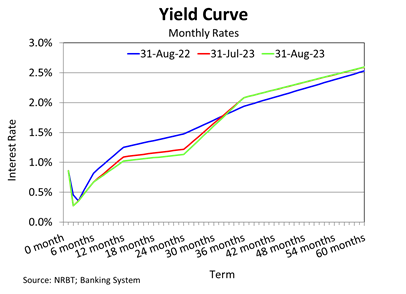Annual imported food prices rose sharply over the month
- Details
- Category: Economic Releases
- Created: 23 June 2017
| Inflation February 2017 | ||||
| Feb 17 |
Jan 17 |
Dec 16 |
Nov 16 |
|
| Headline * | 8.9 | 5.4 | 6.7 | 6.8 |
| Domestic ^ | 3.1 | 1.1 | 2.7 | 3.4 |
| Imported ^ | 5.8 | 4.3 | 4.0 | 3.4 |
| * Year-ended growth | ||||
| ^ Percentage point contribution to year-ended growth | ||||
The annual headline inflation rose significantly in February 2017 by 8.9% compared to a 0.3% deflation in February 2016. Key factors that helped to drive the annual inflation rate higher included the new custom duties and excise taxes introduced in July 2016, rise in global oil and food prices, seasonality of local food, shortage of kava-Tonga supply, and the inflation rates being at very low levels in the same period of last year. Total food prices increased sharply by 11.4% contributing 5.4 percentage points to the annual inflation rate.
Similarly, inflation over the month rose by 3.7% driven mainly by higher prices of domestic food and electricity.
Annual imported inflation increased by 10.5% compared to a 7.1% decline in the same period last year. This sharp rise was driven by the increased prices of food, fuel, and tobacco. Imported food prices rose by 13.2% contributing 3.6 percentage points to the annual headline inflation. The meat, fish & poultry category had the highest increase of 20.2%, followed by an 8.8% increase in the prices of other food components for items such as sugar and flour. The cereal and cereal products category also rose by 7.6% reflecting the increased global food prices. According to the Food and Agricultural Organization (FAO) of the United Nation’s website, the FAO Food price index in February 2017 was at its highest value in almost two years rising by 17.2% above its February 2016 level1.
In addition, fuel prices rose by 21.0% over the year to February 2017, contributing 1.5 percentage points to the annual headline inflation. This was reflected in the increased prices of petrol and diesel over the year by 20.2% and 28.9% respectively. The high fuel prices were due to higher world oil prices which flowed through to local oil prices with a lag of 1-2 months. A year ago in February 2016, the Brent crude oil was US$35.10 per barrel compared to US$56.07 (59.7%) rise in February 2017. The prices of household supplies and services and house maintenance goods for items such as paint, bricks, and aluminum foil also rose over the year.
Imported prices rose by 1.8% over the month due to a 6.3% rise in the price of fuel, and a 2.6% increase in the price of kerosene and liquid petroleum gas reflecting the increase in the global oil prices. The price of tobacco also increased by 7.5% which was attributed to the higher price of Winfield blue cigarettes. Imported food prices rose by 0.9% due to an increase in the prices of items such as mutton flaps, chicken pieces, sugar, flour, and butter.
The domestic prices rose by 6.8% over the year to February 2017. This was driven by the local food category which rose by 9.0% contributing 1.8 percentage points to the annual headline inflation. The cereal products category had the highest increase of 18.0%, comprising prices of goods in the bakery. This reflected the impact of the increased price of imported flour and sugar on these particular domestic food products. This was followed by a 9.6% rise in the prices of fruit and vegetables due to seasonality in local produce. The price of meat, fish, & poultry components also rose by 6.5%. Meals away from home rose by 2.8% due to the increased demand for readily prepared meals. In addition, due to the excess demand for kava-Tonga, its price continued to remain high increasing by 71.4% over the year followed by a 5.4% increase in the price of domestic alcohol. Additionally, the high fuel price was reflected in the price of electricity, which increased by 5.0% whilst the price of household supplies & services rose 1.6%.
The domestic prices increased by 6.3% over the month mainly due to a 10.6% rise in prices of local fruits and vegetables reflecting the seasonality of these food items. This was followed by a rise of 12.1% and 6.3% in the prices of electricity and kava-Tonga respectively.
With world oil and food prices slowly on the rise, in conjunction with the added new custom duties, the Reserve Bank expects the upward inflationary pressure to remain in the near term. The continued shortage of supply in kava-Tonga compared to its high demand is likely to impact the domestic inflation for some time, therefore contribute to the annual headline inflation. The Reserve Bank anticipates the annual headline inflation rate to fall below the inflation reference rate of 5% per annum in 2017/18. However, movements in commodity and oil prices, and other temporary factors may pose a risk to this forecast. Additionally, the vulnerability of Tonga to natural disasters also poses a risk to the local food prices and consequently the inflation outlook.
1 - http://www.fao.org/news/story/en/item/472449/icode/
Download the full report: Inflation Rate - February 2017 | See more Inflation reports

